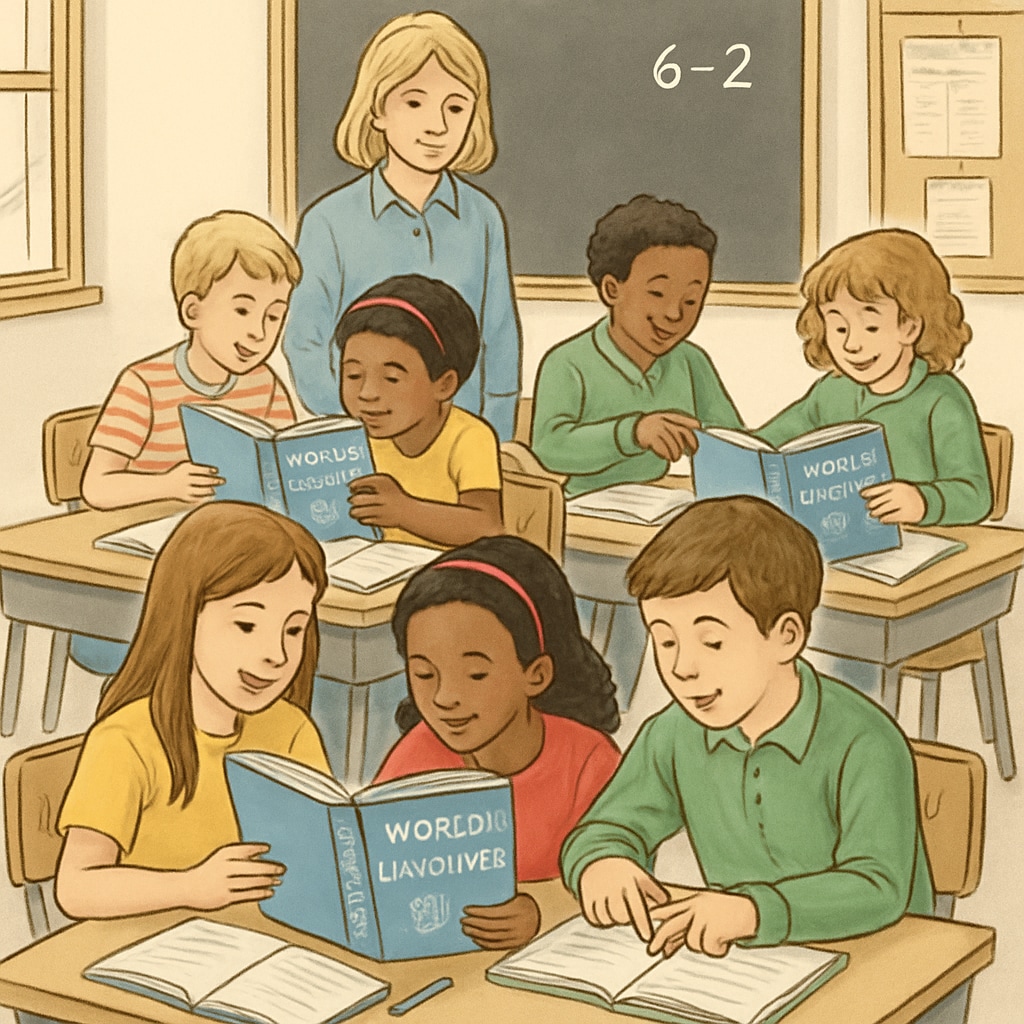The World of Language textbook, a hallmark of language teaching in elementary education, holds a special place in the memories of many students. With its iconic cover featuring a curious cat and its engaging, well-designed lessons, this textbook was more than a teaching tool—it was a gateway to understanding the complexities of language. Reflecting on this beloved resource, it becomes clear how its innovative approach influenced a generation of learners and provides valuable insights into the balance between reading comprehension and oral fluency in modern education.

The Unique Value of World of Language in Elementary Education
One of the defining features of the World of Language series was its ability to combine structured language learning with creative and relatable exercises. Unlike many textbooks of its time, it emphasized real-world language applications, encouraging students to think critically about grammar, vocabulary, and sentence construction. For example, chapters often included exercises that required students to craft their own stories, fostering both creativity and linguistic precision.
In addition to its exercises, the textbook integrated a variety of teaching methods, such as puzzles, visual aids, and collaborative activities, which catered to diverse learning styles. This approach helped students not only memorize rules but understand their practical application. As a result, the World of Language became a cornerstone of effective language education, teaching foundational skills that were both lasting and transferable.
How World of Language Shaped Language Education
The influence of World of Language extended beyond its immediate educational context. Many educators appreciated its blend of scientific methods, including phonics and structured reading strategies, with the natural acquisition of oral language skills. This balance allowed students to develop strong reading comprehension alongside conversational fluency—a goal that remains central to modern language education.
For example, research suggests that early exposure to both structured and natural language learning can improve overall literacy rates (Language Learning on Britannica). The textbook’s approach aligns with this finding, demonstrating the importance of combining methodologies to achieve comprehensive language proficiency.

Lingering Lessons for Today’s Language Education
Reflecting on the value of the World of Language, it’s clear that its emphasis on balance in teaching methods is a lesson worth revisiting. Modern language education often tilts heavily toward either structured methods, such as grammar drills, or natural approaches, like immersion techniques. However, the textbook’s success lay in its ability to merge these two paradigms seamlessly.
To adapt this philosophy to today’s classrooms, educators could integrate digital tools and interactive resources with traditional teaching. For example, apps that offer structured grammar exercises alongside conversational practice are increasingly popular (Language Learning Apps on Wikipedia). These tools embody the same principles that made World of Language so impactful: fostering balanced, engaging, and practical language education.
In conclusion, the World of Language textbook remains a nostalgic and educational treasure for those who grew up with it. Its innovative approach to language teaching in elementary education continues to provide valuable lessons for how we teach language today. By blending structured learning with creative exploration, this textbook shaped not only students’ understanding of language but their confidence in using it—a legacy that deserves recognition and emulation in modern classrooms.


